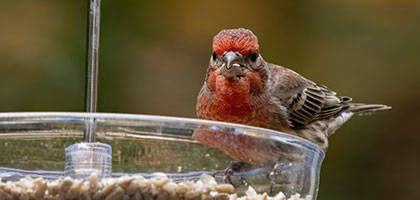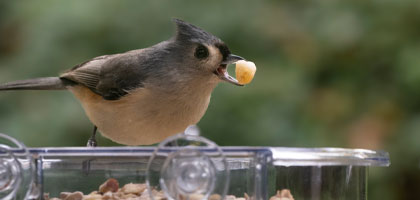Bird feeders are a delight for bird watchers and nature lovers. They attract a variety of feathered visitors to our backyards. But did you know they need regular cleaning?
Dirty bird feeders can spread diseases among birds. This can harm the local bird population and reduce the variety of birds visiting your feeder.
In this guide, we'll show you how to disinfect a bird feeder. We'll provide clear, actionable steps to ensure your bird feeder is clean and safe for your feathered friends.
Why Disinfecting Your Bird Feeder is Essential
Bird feeders can quickly become breeding grounds for bacteria and fungi. These pathogens can cause serious diseases in birds, including salmonella and avian pox.
Regular disinfection plays a crucial role in preventing these diseases. It helps maintain a healthy environment for your visiting birds.
A clean bird feeder not only supports bird health but also encourages more birds to visit. Birds prefer a safe, clean space to feed, ensuring a lively and diverse backyard.
When to Clean Your Bird Feeder
It's vital to establish a routine for cleaning your bird feeder. Cleaning every two weeks is ideal, but sooner if needed.
Here are signs indicating it's time for cleaning:
- Visible bird droppings
- Moldy or wet seed
- Accumulated debris and dirt
Signs Your Bird Feeder Needs Attention
Watch for cues that your bird feeder requires attention. Droppings and seed buildup are clear signals.
Additionally, a lack of bird visitors might indicate a need for cleaning. Regular checks can help maintain feeder hygiene.
Materials Needed for Disinfecting Bird Feeders
Gathering the right materials makes cleaning your bird feeder easier. Always wear gloves for protection.
You'll need a brush to scrub away debris. The brush helps clean tight spots effectively.
Materials List
- Water
- Bleach or vinegar
- Gloves
- Scrub brush
- Bucket or large container
With these simple materials, you can maintain a healthy environment for your feathered friends.
Step-by-Step Guide to Disinfecting Your Bird Feeder
Keeping your bird feeder clean is important for bird health. Follow these steps to disinfect effectively.
Dismantling Your Feeder
Start by carefully taking apart your bird feeder. This allows for cleaning all the nooks.
Remove each part with care to prevent damage. Taking it apart ensures no debris is left unnoticed.
Cleaning and Soaking
Mix a solution of nine parts water to one part bleach. Submerge the parts in this solution.
Allow the components to soak for at least ten minutes. This breaks down dirt and bacteria effectively.
Scrubbing and Rinsing
Use your brush to scrub each part thoroughly. Focus on tough spots to remove hidden grime.
Rinse with fresh water after scrubbing. Ensure all bleach residue is gone to keep birds safe.
Drying and Reassembling
Leave the parts to air-dry completely. Proper drying prevents mold and mildew growth.
Once dry, reassemble your feeder carefully. Make sure each part fits snugly to avoid spills.
Preventing Disease and Maintaining a Healthy Feeding Environment
A clean bird feeder is just one part of a healthy feeding environment. Regular maintenance reduces the risk of spreading disease among birds.
To minimize contamination, avoid overfilling the feeder with birdseed. This prevents mold growth and keeps seeds fresh longer.
Encourage bird diversity by maintaining a tidy area around the feeder. Removing spilled seeds and debris discourages pests and supports bird health.
Natural Alternatives to Chemical Disinfectants
Not everyone prefers using bleach for cleaning. Vinegar is a gentle, natural alternative that effectively reduces bacteria on feeders.
Another option is boiling water. It offers a chemical-free method to sanitize the feeder's parts thoroughly.
FAQs on Bird Feeder Hygiene
How often should I clean my feeder? Clean it every two weeks or when it's visibly dirty.
What if I see sick birds? Remove the feeder temporarily to prevent disease spread and contact a local wildlife expert for advice.






